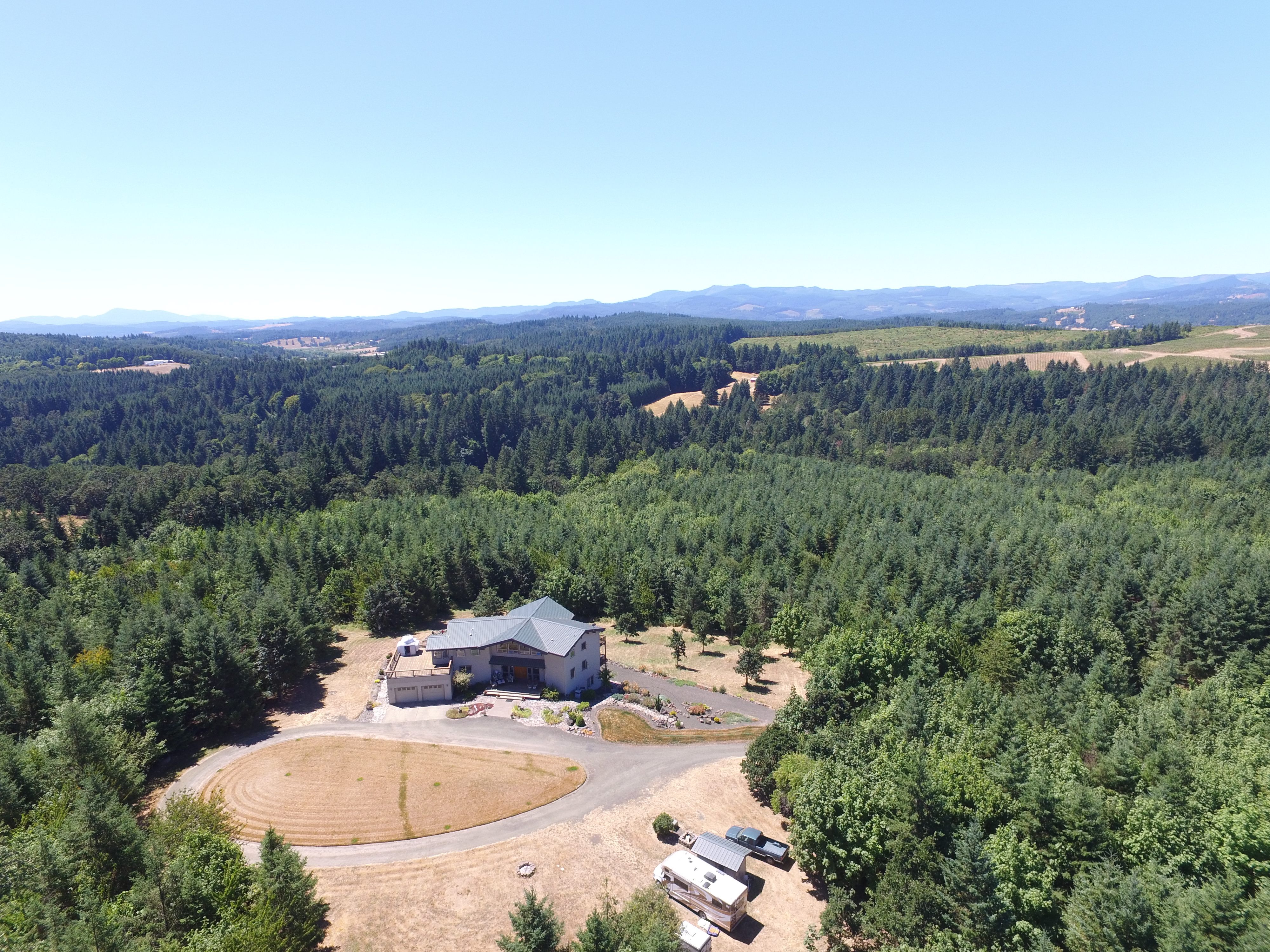An Oregon Couple Has Built the Perfect House for Observing the Total Eclipse
And looking far across the universe.

Jon Brewster has always been interested in how things work. He’s an engineer by training, and he refurbishes steam locomotives. “For astronomy, it’s the universe itself,” he says. “It’s just fascinatingly complex and interesting.” He was given his first telescope when he was eight years old, a dime-store model that he could use to look at the Moon and the rings around Saturn. He still has it, but, he says, “over the years, we’ve upgraded.”
That’s putting it modestly. Brewster and his wife Susan chose the site of their house, on a hilltop in Oregon, to fulfill their vision of building their own permanent observatory. Today, with their suite of telescopes, observatory dome, specialized cameras, and custom software, they are perfectly positioned for 2017’s total solar eclipse. Their observatory-home is right in the path of totality.
The Brewsters, married 40 years, met in high school and complement each other well. When they go out stargazing together, Susan is more likely to lean back in a chair and look through binoculars. She knows the lore and the stories that go with the constellations, the mythology of stars. Jon, on the other hand, likes to nerd out about the digital gear. When Halley’s Comet passed close to Earth in 1986, they bought an eight-inch Celestron scope, and Jon figured out how to control it with a computer. That was not an easy task back then, and it got him a job in Hawaii at the Mauna Kea Observatory. After their time there, they began to get more serious about digital imaging of the universe, and in the mid-1990s started imagining a permanent set-up, in a place with dark sky and good elevation—and ideally positioned for the eclipse.

“We knew the eclipse was coming. We spent years looking for the right spot,” Brewster says. Half an hour outside of Corvallis, Oregon, where he works at HP, can feel like it’s far away from everything, but it was still a challenge to find the right site, with good dark sky and a view of the horizon, with the Milky Way stretching down to the edge. They would drive around at night, and even meet with realtors in the dark. But the right site, a clear-cut hilltop that belonged to a logging company, they encountered for the first time in the day. They came back at night and thought, “This could work.” It wasn’t for sale, but they tracked down the owner and made an offer. It took years of work—putting in a well and a driveway, replanting the clear-cut land, designing the house—before they moved in, in 2001.
There are other serious astrophotographers around, perhaps 20 or 30 in Oregon, Brewster estimates. Most of them like to be on the move, though. “I don’t know of too many people, and still with their day jobs, having a full observatory as part of their home set-up,” he says. Part of the fun of the permanent observatory for him has been automating his equipment, which means, for instance, that he can get a shot that he wants, even while sleeping or when they are not home. One time, when he was trying to shoot the Orion Nebula, winter clouds kept thwarting him. Finally, there was going to be a clear night, which happened to be on the date of a full moon. Normally that would make the task impossible because the bright moonlight would wash the sky out. But that was also the night of a lunar eclipse. When the shadow of the Earth blocked the light of the Moon, the observatory scope was pointed at the nebula and cameras captured the image. Brewster was fast asleep.

The Brewsters often host star parties, with guests from nearby Oregon State University, slideshows of the pictures they’ve taken of the distant universe, and a chance to do some observing. They are, naturally, planning a party for the August 21 total solar eclipse, and Jon already knows what shots he wants to go after. The main dome will photograph the corona; another set-up, with a drone stationed higher up, will capture the moon’s shadow flying towards them. He’ll capture flares, shadow bands, atmospheric effects. All of this will be set up in advance of the event. During the actual eclipse, he’ll be down in the observing field, enjoying the experience.
Afterwards, the Brewsters will go back to their regular astronomical routine. There’s plenty to see in the sky, even on an average night. “We’ve got galaxy clusters to bag,” Brewster says. “I’ve seen a fraction of the way across the universe, but I can see half? Can I see three-quarters? We haven’t really pushed it.”













Follow us on Twitter to get the latest on the world's hidden wonders.
Like us on Facebook to get the latest on the world's hidden wonders.
Follow us on Twitter Like us on Facebook